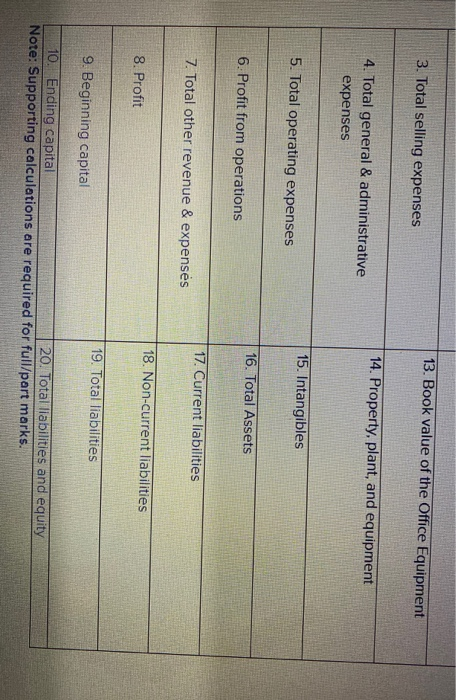On December 31, 2020, Regal Group finished its second year of operations. Early in 2020. Eric Boyd invested an additional $35.000 in the business and $25,000 of the long-term note payable is due September 30, 2021. Regal Group's accountant has finalized the company's records and provided the following adjusted account balances. Note: all accounts have normal balance. Accounts Balance Accounts Balance Accounts Payable 20,000 Miscellaneous 450 expenses Accounts Receivable 32,750 Note Receivable, due 42.000 December 31, 2022 ho Accumulated 1750 Office Equipment 11,500 depreciation, office equipment Accumulated 7.500 Office salaries expense 30,360 depreciation, store equipment Advertising expense 16,300 Office supplies expense 1,200 Cash $47,880 Prepaid Rent 10.800 Copyright 65,000 Rent expense, office 32.400 space Cost of goods sold 269,500 Rent expense, selling 75,600 space Depreciation expense. 875 Salaries Payable 1,500 office equipment Depreciation expense 3,750 Sales 532.500 store equipment 75,600 1,500 532,500 2,500 5,100 space Cost of goods sold 269,500 Rent expense, selling space Depreciation expense, 875 Salaries Payable office equipment Depreciation expense, 3,750 Sales store equipment Eric Boyd, Capital 86,640 Sales discounts Eric Boyd, Withdrawals 9,000 Sales returns and allowances Insurance expense 1,425 Sales salaries expense Investment Income $4,500 Store Equipment Long-term Note 125,000 Store supplies expense Payable, due September 30, 2026 Merchandise Inventory 43,200 Supplies REQUIRED: Using the above information, calculate each of the following: 11. Current assets 1. Net Sales 22,200 50,000 1,800 3,800 2. Gross profit from sales 12. Non-current investments 3. Total selling expenses 13. Book value of the Office Equipment 3. Total selling expenses 13. Book value of the Office Equipment 14. Property, plant, and equipment 4. Total general & administrative expenses 5. Total operating expenses 15. Intangibles 6. Profit from operations 16. Total Assets 7. Total other revenue & expenses 17. Current liabilities 18. Non-current liabilities 8. Profit 19. Total liabilities 9. Beginning capital 10. Ending capital 20. Total liabilities and equity Note: Supporting calculations are required for full/part marks









